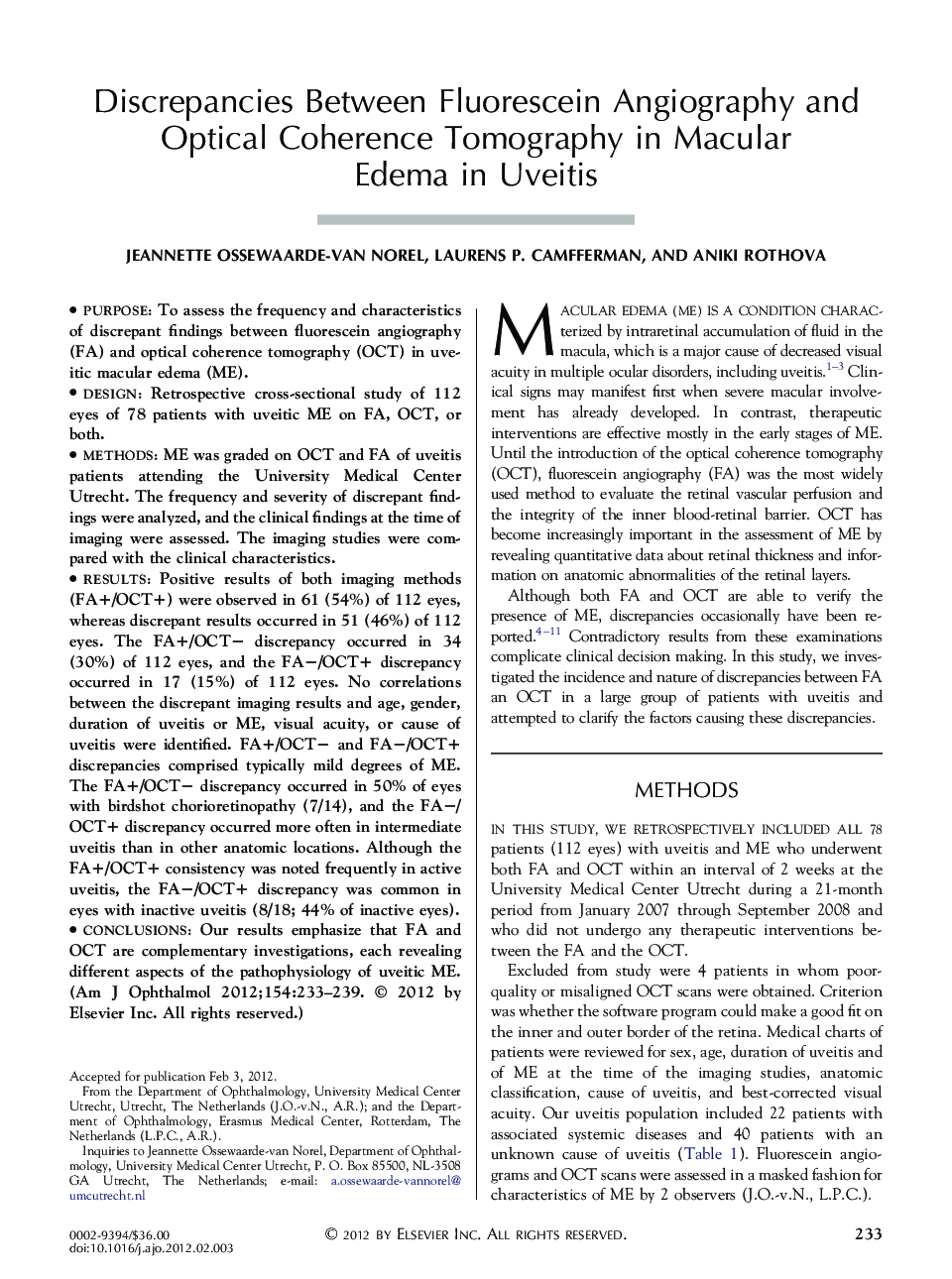| Article ID | Journal | Published Year | Pages | File Type |
|---|---|---|---|---|
| 4002898 | American Journal of Ophthalmology | 2012 | 7 Pages |
PurposeTo assess the frequency and characteristics of discrepant findings between fluorescein angiography (FA) and optical coherence tomography (OCT) in uveitic macular edema (ME).DesignRetrospective cross-sectional study of 112 eyes of 78 patients with uveitic ME on FA, OCT, or both.MethodsME was graded on OCT and FA of uveitis patients attending the University Medical Center Utrecht. The frequency and severity of discrepant findings were analyzed, and the clinical findings at the time of imaging were assessed. The imaging studies were compared with the clinical characteristics.ResultsPositive results of both imaging methods (FA+/OCT+) were observed in 61 (54%) of 112 eyes, whereas discrepant results occurred in 51 (46%) of 112 eyes. The FA+/OCT− discrepancy occurred in 34 (30%) of 112 eyes, and the FA−/OCT+ discrepancy occurred in 17 (15%) of 112 eyes. No correlations between the discrepant imaging results and age, gender, duration of uveitis or ME, visual acuity, or cause of uveitis were identified. FA+/OCT− and FA−/OCT+ discrepancies comprised typically mild degrees of ME. The FA+/OCT− discrepancy occurred in 50% of eyes with birdshot chorioretinopathy (7/14), and the FA−/OCT+ discrepancy occurred more often in intermediate uveitis than in other anatomic locations. Although the FA+/OCT+ consistency was noted frequently in active uveitis, the FA−/OCT+ discrepancy was common in eyes with inactive uveitis (8/18; 44% of inactive eyes).ConclusionsOur results emphasize that FA and OCT are complementary investigations, each revealing different aspects of the pathophysiology of uveitic ME.
